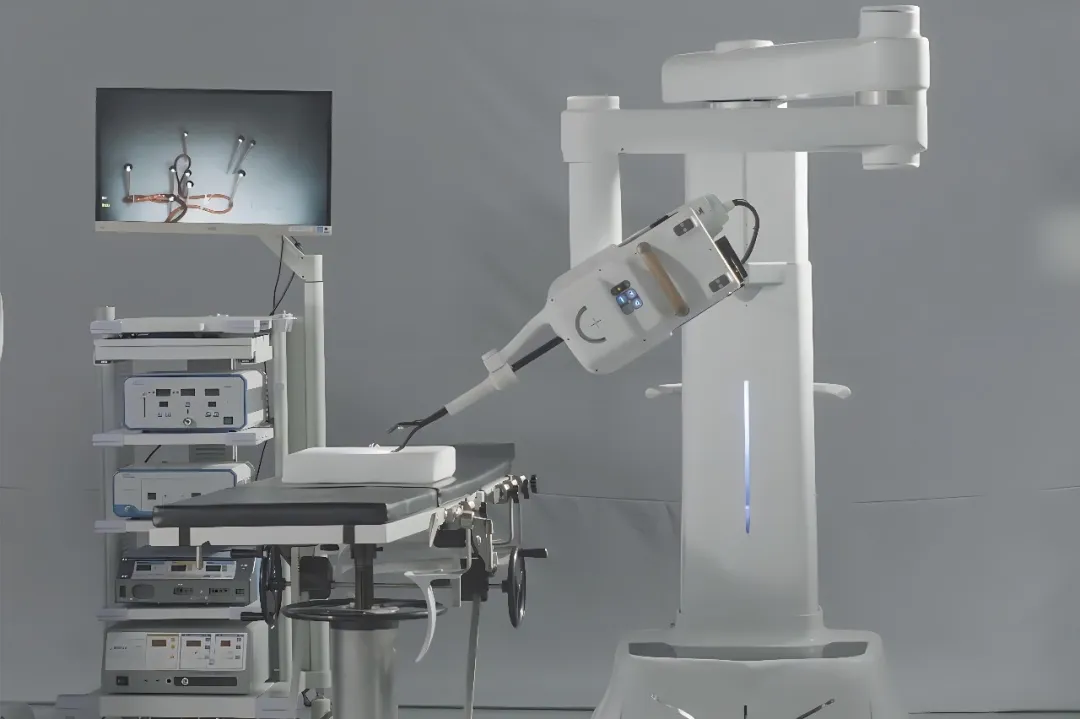Surgical robots are advanced medical devices that combine robotic technology with surgical procedures. They assist surgeons in planning surgeries, enhance accuracy during procedures, and digitize traditional techniques. By leveraging mechanical control, visual imaging, optoelectronic technology, artificial intelligence, and other technologies, surgical robots propel surgical procedures towards precision, minimally invasive, and intelligent directions in the medical field.
 In the application of surgical robots, advanced hardware and software technologies have brought about upgrades in accuracy, precision, and intelligence for surgical procedures. For the hardware component, the Qiyang RK3568 core board can be utilized. Based on the Rockchip RK3568, this core board enables rapid development of medical
In the application of surgical robots, advanced hardware and software technologies have brought about upgrades in accuracy, precision, and intelligence for surgical procedures. For the hardware component, the Qiyang RK3568 core board can be utilized. Based on the Rockchip RK3568, this core board enables rapid development of medical
(10).jpg)
The core board is based on a quad-core Cortex-A55 architecture, with a frequency of 2.0GHz, meeting the demand of surgical robots for processing large amounts of real-time data. The built-in NPU provides 1.0 TOPS of AI computing power for lightweight AI applications, enabling AI algorithm analysis of patient medical imaging data and assisting in surgical operations, such as intelligent positioning assistance and automated cutting. With powerful computing support, surgical robots can quickly execute complex AI algorithms, improving surgical accuracy and efficiency.
Surgical robots have high reliability and quality requirements for the display end to ensure that doctors can clearly and accurately observe the surgical scene, medical images, and surgical-related data and indicators. The core board supports multiple display interfaces such as MIPI-DSI, LVDS, eDP, and HDMI, with a maximum resolution of up to 4K, meeting the display requirements of surgical robots.
Accurate reproduction of the true colors of the surgical scene can help doctors better identify structures such as tissues and blood vessels. The core board is equipped with an image signal processor (ISP), supporting functions such as noise reduction, distortion correction, and color enhancement, allowing for color correction to make surgical images more realistic and accurate. It can also dynamically adjust the brightness, contrast, and saturation of the image in real-time to adapt to different lighting conditions for observation needs.
Supporting 2 channels of MIPI-CSI camera input, it can connect two cameras and transmit images to the display device, providing different perspectives of the surgical observation area to help doctors observe the surgical process comprehensively and obtain more information.
With abundant I/O expansion interfaces such as Ethernet ports, PCI-e, and USB3.0, it can meet the needs of medical devices for data transmission, communication, and external device connection, providing more functions and flexibility, and increasing the overall performance and application range of medical devices.
Surgical robots have brought revolutionary changes to surgery. Although there are still some challenges, with time, surgical robots will continue to develop, bringing better treatment outcomes for patients and achieving more accurate and safer surgical operations.



